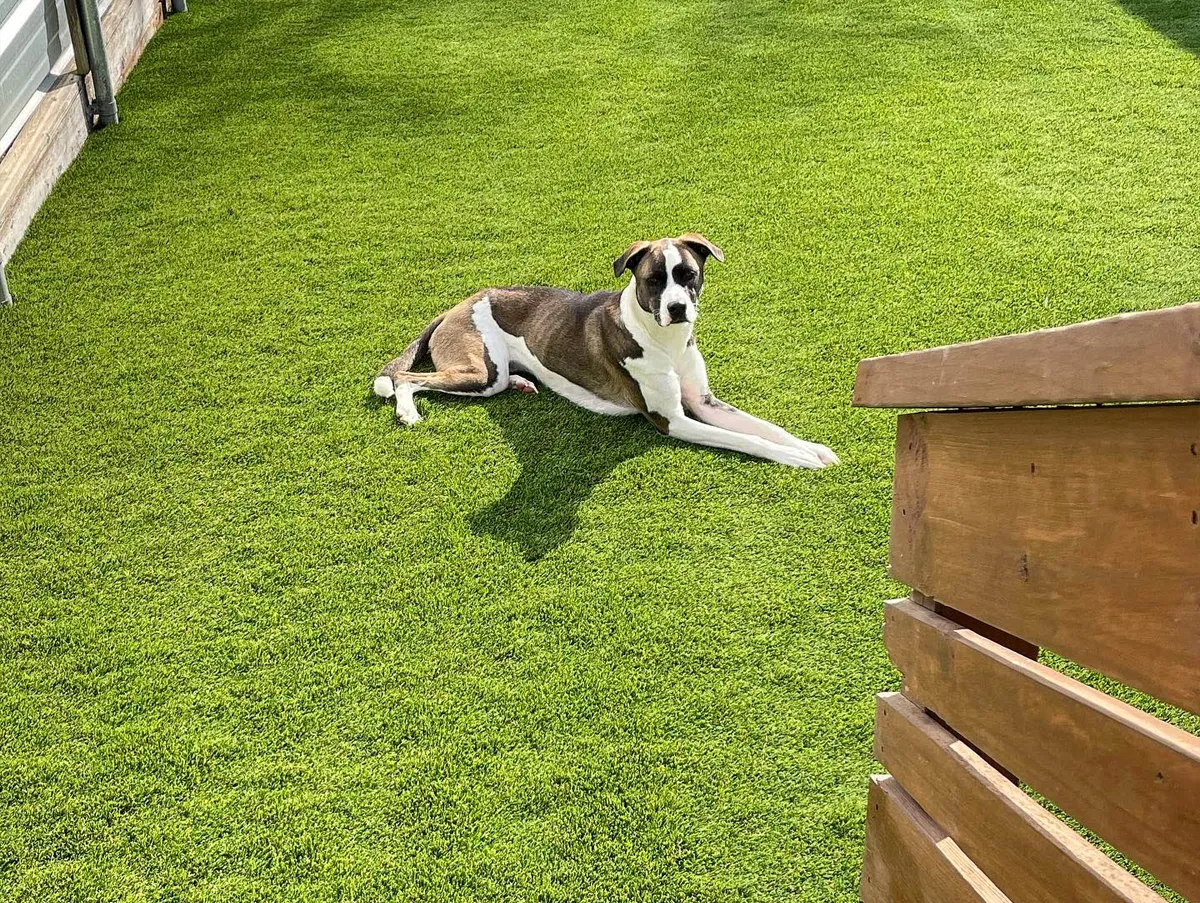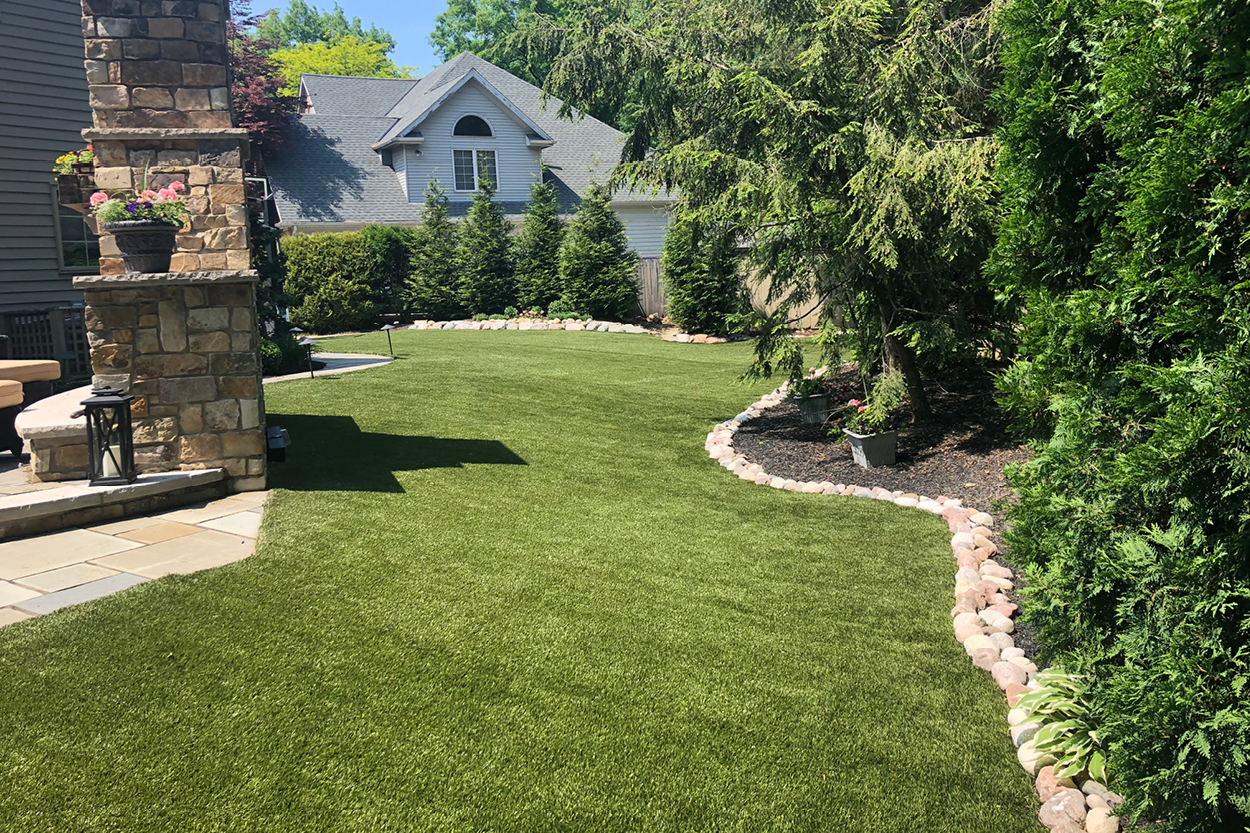Reputable Phoenix Turf Companies Providing High-End Synthetic Grass Installation
Reputable Phoenix Turf Companies Providing High-End Synthetic Grass Installation
Blog Article
Explore the Environmental Perks of Opting for Artificial Lawn Solutions
The adoption of synthetic lawn remedies presents a compelling chance to attend to pushing ecological obstacles. By considerably decreasing water use and decreasing the application of harmful chemicals, these options not just advertise sustainable landscaping however likewise shield neighborhood communities.
Water Preservation Perks
One of the most significant benefits of man-made turf is its capability to preserve water. In contrast, man-made turf does not need watering, considerably reducing the total demand for water resources.
By eliminating the demand for regular watering, fabricated grass adds to sustainable landscape techniques and helps alleviate the ecological impact of too much water usage. The conservation of water prolongs to the decrease of runoff, which can lead to dirt disintegration and waterway pollution.
Furthermore, the installation of synthetic grass allows property owners and districts to allocate water resources extra efficiently, focusing on vital usages such as alcohol consumption water and farming. The change towards man-made lawn not just promotes responsible water usage however likewise lines up with more comprehensive ecological objectives aimed at preserving natural resources.
As neighborhoods progressively focus on sustainability, the water preservation advantages of fabricated lawn offer an engaging case for its adoption in residential and commercial landscape design tasks.
Lowered Chemical Usage
The transition to synthetic grass substantially decreases the reliance on chemical treatments frequently utilized in natural grass maintenance. Traditional lawn monitoring typically entails the application of plant foods, herbicides, and chemicals to promote growth and control pests. These chemicals can posture threats to human health and wellness, regional wildlife, and the setting, adding to soil and water contamination.
On the other hand, synthetic grass eliminates the need for these hazardous compounds. Once mounted, it calls for very little upkeep, mainly being composed of normal cleansing and occasional infill replenishment. This reduction in chemical usage not just profits the instant atmosphere however likewise adds to wider environmental stability. By reducing the release of synthetic substances right into the environment, synthetic grass promotes much healthier soil and water supply.
In addition, the absence of chemical overflow connected with synthetic grass installations assists shield local rivers from contamination, sustaining aquatic life and preserving biodiversity. Arizona turf. As communities progressively focus on lasting practices, going with synthetic grass presents a practical option that straightens with ecological conservation goals. Through this shift, homeowner can enjoy lush green areas without jeopardizing environmental wellness, leading the means for a more sustainable future
Lower Carbon Footprint

In addition, the installment of synthetic grass can lead to significant water preservation. All-natural grass require considerable amounts of water for irrigation, which not only includes in the carbon impact related to water removal and therapy but also strains regional water sources. In comparison, fabricated lawn needs minimal maintenance, needing no watering, consequently significantly decreasing water usage and its associated energy costs.
In addition, the longevity of man-made turf adds to its decreased carbon influence. With a pop over to these guys lifespan of up to 15 years or more, the demand for constant substitutes is reduced, leading to less waste and lower power intake in manufacturing and dealing with traditional yard choices. In general, man-made turf presents a lasting option for environmentally mindful landscaping.
Habitat Conservation
Habitat preservation is a critical factor to consider in the dispute over landscaping choices, specifically when contrasting synthetic turf to all-natural turf. Natural yard yards typically require extensive upkeep, including using pesticides, plant foods, and herbicides, which can adversely influence regional communities. These chemicals can seep into the dirt and waterways, damaging native vegetation and fauna and interfering with regional habitats.
Synthetic grass gets rid of the requirement for harmful chemicals, thus securing close-by wild animals and keeping the honesty of bordering communities. The setup of synthetic lawn can lead to the conversion of former yard areas into even more biodiverse landscapes, such as pollinator yards or indigenous plant areas, which can support local wildlife.
Ultimately, the transition to artificial turf not only preserves water and reduces upkeep initiatives yet additionally cultivates an extra unified connection between human activities and the all-natural setting, advertising environment conservation in the procedure.
Long-Term Sustainability
Long-lasting sustainability is a critical variable in reviewing the benefits try this web-site of synthetic turf over typical grass yards. One of one of the most substantial benefits of artificial lawn is its durability; it can last approximately 15-20 years with very little maintenance, whereas all-natural grass calls for constant reseeding and substitute. This durability decreases the demand for continuous resources, such as water, plant foods, and pesticides, which are necessary for preserving a healthy and balanced turf lawn.
Furthermore, synthetic lawn adds to a decrease in carbon discharges linked with yard treatment devices. Typical yards often need gas-powered mowers, trimmers, and blowers, every one of which add to air contamination. Arizona turf. In contrast, synthetic grass removes the need for such devices, promoting a cleaner setting
Moreover, the manufacturing of synthetic grass significantly uses recycled products, improving its sustainability profile. As makers adopt eco-friendly practices, the ecological impact of artificial lawn remains to diminish.

Conclusion
The fostering of man-made turf solutions provides substantial environmental advantages, including substantial water preservation, reduced dependence on damaging chemicals, and a lower carbon impact. Artificial grass help in protecting all-natural habitats by lessening land disturbance and promoting long-term sustainability with the usage of long lasting products. Collectively, these aspects underscore the capacity of synthetic grass to add click for more info positively to ecological health and use a practical option to traditional landscaping methods in a progressively resource-conscious globe.
In contrast, synthetic lawn does not require watering, considerably minimizing the overall demand for water sources. By decreasing the release of synthetic substances right into the ecological community, artificial turf promotes much healthier soil and water systems.
Moreover, the installment of fabricated lawn can result in substantial water preservation. In contrast, artificial lawn requires marginal upkeep, needing no watering, thus substantially minimizing water usage and its associated energy expenses.

Report this page